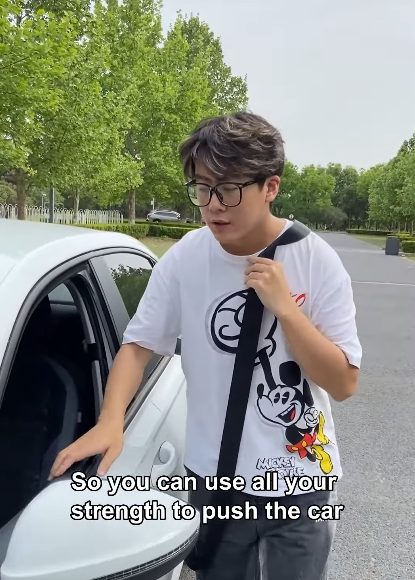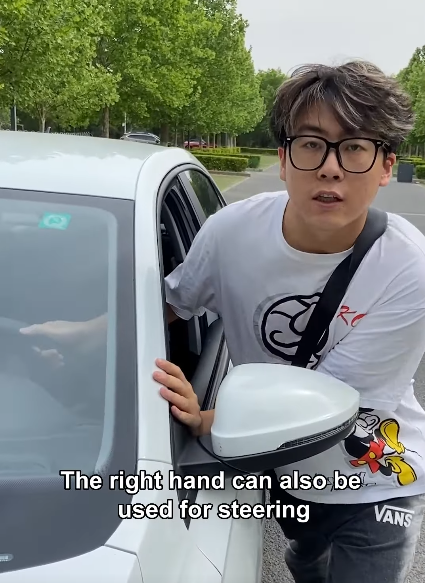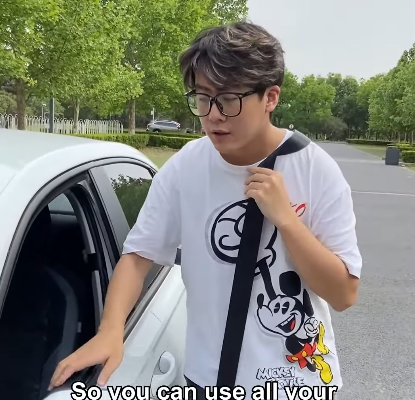
When it comes to car safety, seat belts are one of the most fundamental, yet often overlooked, components of vehicle safety systems. The importance of wearing a seat belt is taught to us from a young age, and while we may buckle up without thinking twice, there are some surprising truths and secrets about car seat belts that most people are unaware of. In fact, it’s estimated that 90% of people don’t fully understand the intricacies of how seat belts function or the best practices for using them effectively. Let’s dive into four essential, yet often misunderstood, secrets of car seat belts that could make a world of difference in your safety on the road.

1. Seat Belts Have an Optimal Position—And It’s Not What You Think
When you buckle up, the goal is to ensure that the seat belt is positioned correctly to maximize its effectiveness in case of a crash. Many people think that a seat belt should simply fit across the lap and chest without much thought to its positioning, but the reality is far more specific. For optimal safety, the shoulder belt should cross the chest and rest between your neck and shoulder, while the lap belt should lie across your hips, not your stomach.
This correct positioning ensures that the seat belt can distribute the crash forces evenly across the strongest parts of your body—the ribcage and pelvis—while minimizing the risk of injury to more vulnerable areas like your abdomen. In fact, the lap belt should never sit too high around your abdomen, as this can increase the likelihood of severe internal injuries in the event of a collision. The shoulder belt should also never be placed under the arm or behind the back, as doing so can render the seat belt ineffective and significantly increase the risk of injury in an accident.
The positioning of the seat belt can make the difference between life and death, so it’s important to adjust the seat belt properly every time you get into the car.

2. Seat Belts Are Designed for Adults—But What About Kids?
Seat belts are primarily designed for adults, but they may not fit children correctly, leading to improper use and a significant risk of injury in the event of a crash. A standard adult seat belt often doesn’t provide sufficient protection for a child because it is too big and doesn’t fit their smaller frame properly. This is where booster seats come into play.
Children who are too small for an adult seat belt need to use a booster seat to ensure the seat belt fits them correctly. Booster seats raise the child up so that the shoulder belt rests across the middle of the chest and the lap belt stays low across the hips, providing much better protection. The American Academy of Pediatrics recommends that children use a booster seat until they are at least 4’9” tall and between 8 and 12 years old, or until the seat belt fits them properly without the booster.
Using the right seat belt system for children, whether it’s a booster seat, forward-facing seat, or rear-facing car seat, is essential to preventing injury. While it may seem like a hassle, ensuring that your child is properly secured in a car seat or booster seat can save their life in the event of a crash.

3. Seat Belt Extenders—Are They Safe?
If you’re someone who struggles to buckle a standard seat belt because of body size or other reasons, you might consider using a seat belt extender. These extenders are designed to make the seat belt longer so that it can fit around your body comfortably. While they can be convenient, there’s an important catch: not all seat belt extenders are created equal, and using one improperly can compromise your safety.
In fact, the National Highway Traffic Safety Administration (NHTSA) strongly advises that seat belt extenders should only be used if they are provided by the vehicle manufacturer. Using third-party extenders, or even some that come with aftermarket accessories, can lead to improper fitment and could even cause the seat belt to perform inadequately in the event of a crash. If you do need an extender, make sure to get one that is specifically designed for your car and comes from the manufacturer of the vehicle.
It’s also worth noting that an extender should never be used to make a seat belt fit if the seat belt itself is not properly adjusted. Extenders are meant to be used as a solution for specific needs, but they should not replace the proper usage of the seat belt.

4. The Click That You Hear Doesn’t Mean It’s Perfectly Secure
The sound of the seat belt “clicking” into place is often assumed to mean that the seat belt is securely fastened. However, this sound only indicates that the latch has engaged. It doesn’t guarantee that the seat belt is properly positioned across your body or that it has the right amount of tension. In some cases, the seat belt may appear to be buckled, but if it’s twisted, too loose, or improperly positioned, it may not provide full protection in a crash.
To make sure that the seat belt is working effectively, always check the following:
- Check for twists: A twisted seat belt can cause it to lock improperly, which reduces its effectiveness. Make sure the belt is flat and smooth across your body.
- Ensure it’s snug: The belt should fit snugly against your body without too much slack. You should be able to move but not to the point where the belt doesn’t properly restrain you.
- Positioning: As mentioned earlier, ensure that the shoulder belt crosses your chest, not your neck, and that the lap belt is securely placed across your hips.

Bonus Secret: Seat Belts Have an Expiration Date
While it’s not something most people think about, seat belts actually have an expiration date! Over time, the materials used to make seat belts—especially the webbing—can degrade due to factors like heat, moisture, and friction. In some cases, the seat belt’s webbing may become weak, which reduces its ability to restrain passengers during a crash. In fact, some manufacturers recommend replacing the seat belts in vehicles after a certain number of years, especially if the car has been in an accident, as the integrity of the seat belt system could be compromised.
Many newer vehicles come equipped with sensors and technology that can help ensure seat belts function properly. However, it’s still a good idea to have your seat belts checked periodically, particularly if they’re older or if your car has been involved in a collision.

Conclusion
The car seat belt is one of the most effective safety devices in modern vehicles, yet many people still don’t fully understand how to use it correctly. From proper positioning and fitting to knowing when and how seat belt extenders are safe, the little-known secrets of seat belts can make a big difference in your safety on the road. So next time you buckle up, take a moment to check that your seat belt is positioned properly, snug, and secure—it could save your life.
Now that you know these four crucial secrets about car seat belts, make sure to pass on this knowledge and keep yourself and your loved ones safe on the road!



